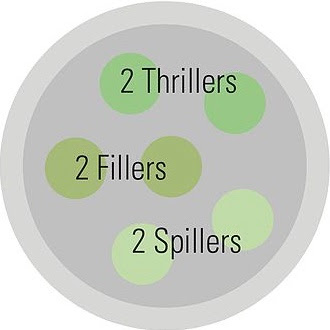CHOOSING YOUR DESIGN
An easy way to start off your succulent garden is by finding a simple glass or ceramic container. Which ever way you decide to arrange and decorate these it will come out beautifully.
Pinterest has so many different designs to choose from if you decide you want to purchase a planter, or make a DIY planter. Just browse around
and find something that matches your home, whether it be modern and
minimalistic, or colorful and abstract. Pinterest allows you to save time finding something specific through its search engine that uses key terms to show you specific items in the fastest way to skim possible; by giving you a summary of the article through a detailed image. By clicking on the image you would be redirected to the purchase site or the instructions blog site.
Between the soil and the moss, you provide some moisture to
the roots to keep them hydrated. The charcoal adds nutrients, and the stones
and sand allow for proper drainage. At the bottom of your planter be sure to
place a loose cloth to prevent the sand and stones from falling out from the water
draining holes.
PLANTER LAYOUT
Succulents can be categorized into 3 main groups:
- Thrillers: tall, attention grabbing succulents which become the centerpiece of your arrangement.
- Fillers: grounded succulents which grow outwards and tend to propagate (create smaller “baby” versions of themselves) faster. They are called fillers because they fill the top of the soil to cover any open/empty spaces.
- Spillers: succulents which grow in a vein-like manner. Imagine a necklace full of beads. These add a bit of chaos to your arrangement so it doesn’t look too clean and it makes your arrangement look more natural. Spillers tend to drip over the edges of the planter.
Image credit:
1. https://i.pinimg.com/originals/10/78/4d/10784df7702965d4f1795b29b55925f6.jpg
1. https://i.pinimg.com/originals/10/78/4d/10784df7702965d4f1795b29b55925f6.jpg
2. https://i.pinimg.com/736x/4d/e7/25/4de725390b7c1fb9833459f89fb34475--succulent-arrangements-succulents.jpg
3. https://i.pinimg.com/236x/f0/53/1f/f0531f8a3655ab36d638ecbbdd827aa9--outdoor-planters-outdoor-decor.jpg
3. https://i.pinimg.com/236x/f0/53/1f/f0531f8a3655ab36d638ecbbdd827aa9--outdoor-planters-outdoor-decor.jpg




This was a fun blog filled with attractive imagery and interesting facts that I was not aware of.
ReplyDeleteI'm sorry to see that you did not get any feedback on this. Looking over this, there are a few points that a partner might have been able to catch. For example, the beginning abruptly points us to Pinterest, but not everybody who wants to build a succulent garden has knowledge of that website (presumably), and from my experience, I just don't get Pinterest. It would have been better, perhaps, if you had been more forceful about what kind of garden we're making and just started us off with the materials. Also, I think it would have been better if you had made your own image to go along with your information about the soil layers, the fact that the image didn't match up well with your words was a little confusing.
On the other hand, I loved learning about the thrillers, fillers, and spillers. It was fun to learn the lingo of this art. It would have been nice if there was a little conclusion after that.